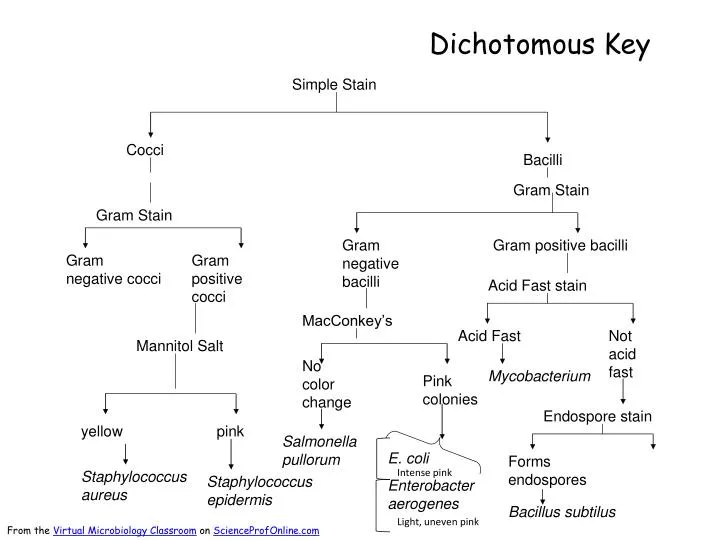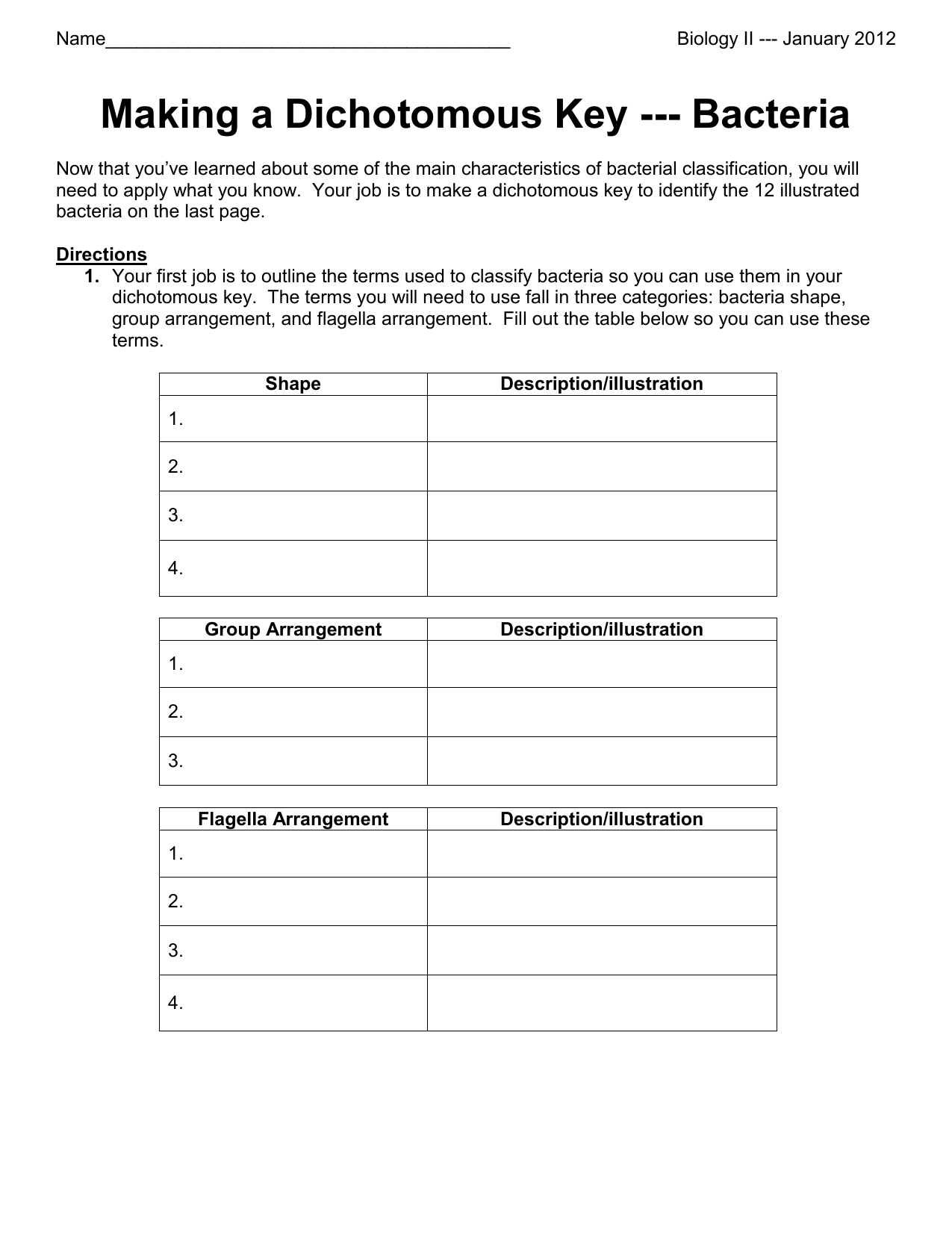
- #Dichotomous key microbiology unknown bacteria how to#
- #Dichotomous key microbiology unknown bacteria movie#
#Dichotomous key microbiology unknown bacteria movie#
Once selected, review the information and watch the Flash-animated movie (animation) located within this link. Once in WileyPlus (Chapter 6), select the “Bacterial Identification by API” link located under the heading, Take Another Look.

Continue to Part Two after completing the table.ĬAse study scenario: identify specific bacteria through biochemical testing To gain an understanding of the processes involved with identifying bacteria through biochemical tests, access Chapter 6 of the text in WileyPlus located on the Week One course page. Use Figures A, B, C, and Gram stain results to identify group and arrangement of bacteria. The bacteria are arranged in a diplo- fashion.Įnter the group and arrangement in the table. (The bacteria are not rod- or club-shaped, so focus on the cocci arrangements.) Identify the arrangement that is most prominent. Now use Figure C to describe arrangement of bacteria. (Note: spherical is circular.) The bacteria belong to the Gram-negative cocci group. According to Figure B, the shape type is closest to spherical. Consider the shape of individual cells for item 5. Because the organism is red (not clear or another color), it is indeed Gram-negative according to item 3. According to the key, continue to item 3.

Īfter performing a Gram stain, you observe the following under a microscope:īegin with item 1 on the dichotomous key (Figure A).īecause the organisms are red, they are not Gram-positive. The following are the tests that were used to identify the two. The purpose of this experiment was to perform a variety of tests to identify the bacteria contained in the unknown sample labeled number 15. There are two main types of bacteria, gram negative and gram-positive. One of the most fundamental differential staining techniques used in the study of bacteriology is gram staining.
#Dichotomous key microbiology unknown bacteria how to#
Read through the Sample Identification on the following page for an example of how to identify bacterial groups and arrangements using Figures A, B, C, and the Gram stain results.Ħ pages, 2995 words The Term Paper on Identifying Unknown BacteriaĪbstract.

Use Figure C to identify the type of arrangement displayed by the unknown bacteria. Neither purple nor red = No cell wall (neither Gram positive nor Gram negative) You will use all three to determine to which major group unknown bacteria belong. Review the dichotomous key in Figure A, the bacterial shapes in Figure B, and the Gram stain information below. PART ONE: GENERAL BACTERIA IDENTIFICATION When a microbiologist needs to identify a specific bacterium, biochemical tests are used. The dichotomous key is useful when a microbiologist only needs to know which group an unknown microbe belongs to on a general level. Two common tools microbiologists use to identify unknown bacteria include dichotomous key and biochemical tests. Bacteria identification is accomplished in a number of ways.


 0 kommentar(er)
0 kommentar(er)
